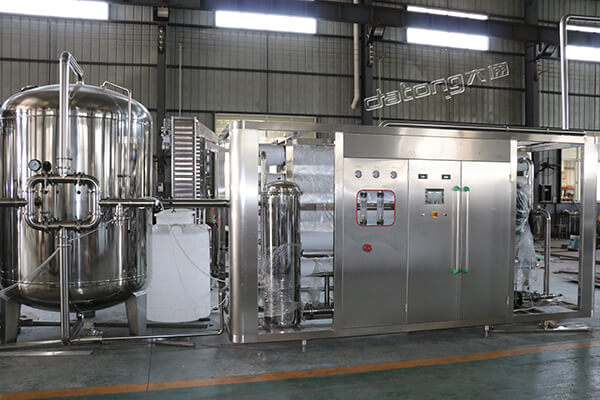How Does the Hard Water Affect the Reverse Osmosis Filtration Systems
Views: 1262
Author: Site Editor
Publish Time: 2017-08-09
Origin: Site
Datong Machinery,stepping with the new technology to manufacture quality water RO treatment Systems.

Reverse osmosis (RO) can be one of the best ways to treat water for residential and light commercial facilities. But, there can be issues that exist after a RO unit is installed. One issue that arises is the challenges presented with hard water. During the filtration process, hard water can cause scale, making it extremely difficult for RO’s membrane to work and the result is lower quality of water.
How to reduce water hardness before RO
Testing is the best way to deal with water hardness before installation. RO systems are designed to create a lot of pressure to a certain solution to separate out heavy minerals. Knowing what types of minerals are in the water can help when installing a system.
“As with any water treatment system, following the water treatment systems manufacturer’s installation instruction is the most important part of the installation,” notes McDowell. “The second important part is knowing your water. If you know that you have a specific issue such as iron, an iron filtration system should be installed in tandem with the RO.”
After the Reverse Osmosis Filtration Systems installation, it”s always best to continue to monitor the water to make sure scaling isn’t becoming a major problem in the RO system. If you are changing the membranes of your RO system quite frequently, McDowell suggest that it may be time to find another system and/or hardness solution.
“Carbon filters may be used to remove chlorine, which can have a negative effect on TFC (thin film composite) and TFM (thin film material) membranes,” notes Jan de Baat Doelman, president of Scalewatcher. “Carbon pre filters are not used if the RO system contains a CTA (cellulose tri-acetate) membrane.”
Ion exchange is commonly used to soften water. During ion exchange, hard water is passed through a cylinder filled with resin beads that have been saturated with sodium. When this happens, the hardness ions are attracted to the resin and the sodium ions are released.
Fox adds that softening and ion exchange are used for the removal of hardness ions and that RO can be effective as well, but not if you’re trying to protect its membrane.
Going green
One of the major downfalls of having hard water and its effects on a RO system is that it is not very energy efficient. The minerals that clog the RO and cause scaling make the RO unit work even harder, waste water and run up the utility bill. There are ways to prevent this from happening and in return help the environment.
‘The amount of water that’s wasted, the discharge issues that we’re facing all over this country and really all over the world have become serious enough that the water treatment industry is paying attention to the need to reduce discharge, save water and be more environmentally friendly,” asserts Fox. “I would like to see more of a focus on the need to become more efficient on the waste specifically — hopefully eliminating any chemical discharge in the widespread use of reverse osmosis.”
There is little doubt that RO has been an effective filtration technology for several decades. While it does have its waste and energy drawbacks, there are fewer more efficient and practical innovations available at this time for residential and light commercial use. As companies continue to go green with solutions for hard water and scale reduction, the focus will become more conscious of end users, the environment and the bottom line.




